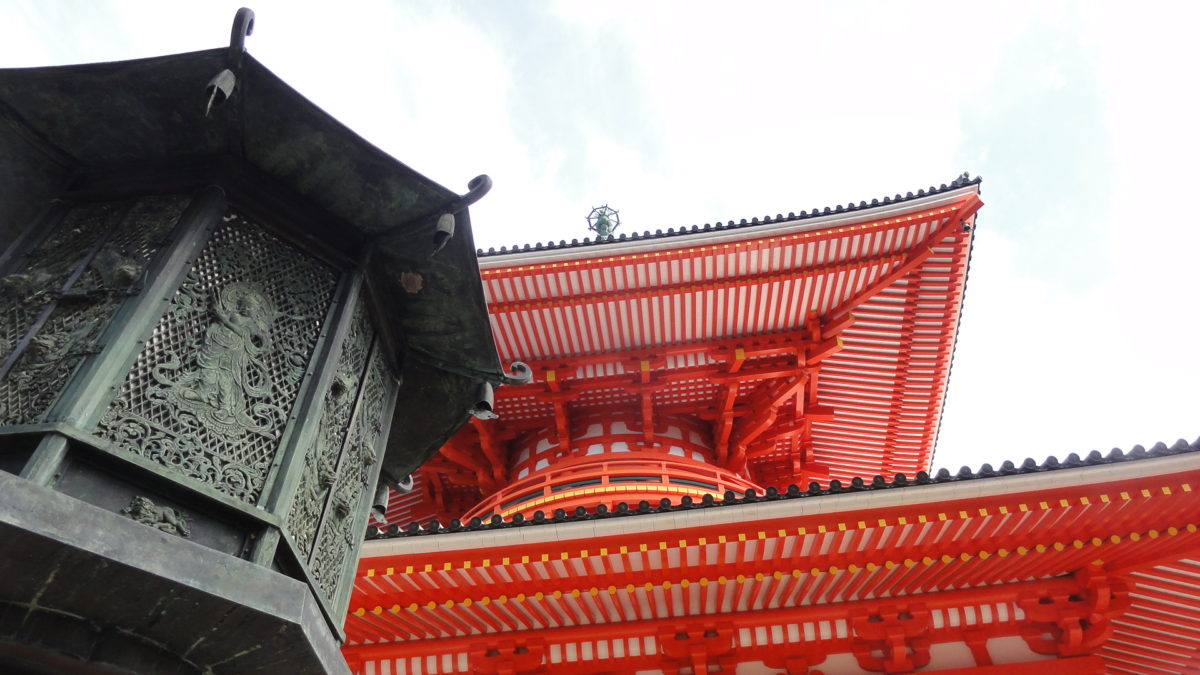Koya-san is 1200 year-old Shingon Buddhism capital founded by Kukai. I went there, and took part in a ritual called “結縁灌頂(Kechien-Kanjyo)“, which was very interesting and impressive for yogis.
I’d like to report what that ritual was like, and what I felt from it.
Origin and overview of the ritual
Originally, Kechien-Kanjyo is the Tantric Buddhism ritual to bear the connection between practitioners and Buddha.
In the ritual, we first entered the small hall while chanting “南無大師遍照金剛(Nam Daishi Henjyo Kongo)”, which is Kukai’s mantra. In the hall, the higher ranked priest asked us to follow Buddhism commandments, and also lectured the mantra and mudra that we need to practice in the next hall.
After that, we were guided to the large hall where we do “投華得仏(To-ke Toku-butsu)” and “灌頂(Kanjyo)”. The hall was dark, lit by only candle lights. The ritual was taken generally in the following manner.
- With a group of five people, participants are guided to Mandala by monks.
- While participants are guided, they are put blindfold. Until we get to Mandala, the group walks in line while keeping mudra and keep chanting Samanta bhadra’s mantra “Om samayas tvam”
- At Mandala, with putting the blindfold on, drop the holly leave in the hand. The participant bears the connection with the Buddha where his/her dropped leave is.
- After that, participants are poured “wisdom water” by higher ranked priest above their head(This is called “Kanjyo”)
Kechien-Kanjyo is the miniature of our life
From here is the personal impression of yoga and Zen practitioner against this ritual.
Wondering in the darkness with blindfold, is just as same as our daily lives itself. We get in trouble, we get lost so often in our life.
Monks were the guide in that darkness. They drew our hands, and chanted mantra to lead us to Mandala. Their roll as the guide in the ritual are totally same as the daily life.
However, participants kept together even in the darkness with mudra and mantra, and get to Mandala in the end.
“Om samayas tvam” is the mantra of Samanta bhadra, the symbol of seeking the truth and enlightenment in Tantric Buddhism.
Making Samanta bhadra’s mudra and chanting his mantra with the group to get to Mandala seemed symbolizing the function of Sangha, the Buddhism community where seekers of enlightenment get together.
For me, as a whole, this ritual seemed just like a miniature of the life of the people who seek their inner peace and freedom, and also the wisdom and will power to contribute to all beings’ happiness and freedom even in the darkness.
Come to think of it, I’d like to appreciate Koya-san to accept zen practitioner and yogi like me to take part in such a valuable ritual.
Also, the roll of monks in this ritual (guiding the lost and suffering people) are similar to us yoga / pilates instructor, and massage therapist.
So, I’d like to return this learning to my yoga / pilates lessons.
Gassho
![]()
If you are living in Hyogo / Osaka and interested in yoga, pilates, and thai traditional massage, please check following links as well.
- YOGA (HATHA / YIN)
- PILATES
- Thai Traditional Massage
Seed Training welcomes your questions and bookings on yoga, pilates, and Thai traditional massage through contact form and telephone.
*You can take an initial consultation & short trial of Private / semi-private lessons (YOGA / PILATES) for free!
090-6756-5136
(I cannot get the phone when I’m having lessons, treatment, and moving. In such a case,please leave a message so that I can call you back later)



